Movie Retrospective: Room at the Top
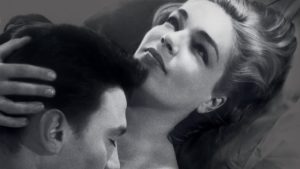
The opening moments of Jack Clayton’s 1959 film Room at the Top perfectly set the scene for things to come. Aboard a train taking him from his rather uninspiring home town of Dufton to the much more prosperous one of Warnley, Joe Lampton (Laurence Harvey) contemplates his future life and the chance of social advancement which it may bring. Based on the 1957 novel of the same name by John Braine, Room at the Top is a story about social class, impossible dreams, ambitious aspirations and the dire consequences which can arise out of personal choice. Arriving in Warnley, and taking up his new position in the Borough Treasurer’s Department as an accountant, it is quickly evident to the viewer that Lampton has inherent designs to rise high above his working class background. At first, it appears he will do whatever it takes to achieve such a goal. Later on, as we will see, this master strategy of his is tempered by strong emotions for a significant other in his life.
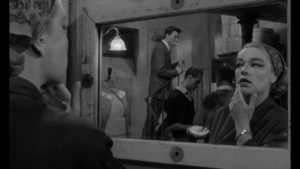
Often cited as the first of the so-called kitchen sink dramas, Room at the Top is a product of its era and, yet, it has aged remarkably well in the intervening 60 years since its original release. Set in the late 1940s, its immediacy with respect to the Second World War was something that was still very palpable for members of the public who saw it in 1959. The fact that Joe is a former veteran himself enhances this effect somewhat. But there is a twist to this particular tale which might not have appealed to all and sundry. Lampton – a former POW – freely admits that he is practically happy that he sat out most of the conflict. It gave him time to ponder and to study; however, when the pompous Jack Wales (John Westbrook) continuously ribs Joe about his lowly rank and service (or rather lack thereof), the latter does little to disguise his mounting annoyance. For Joe has already set his sights on one Susan Brown (Heather Sears), the daughter of the local business magnet Mr. Brown (Donald Wolfit). At this early point in the film, Susan appears to be the very epitome of all that Joe wants: she is wholesome, apparently chaste and – most significantly – comes from a wealthy background.
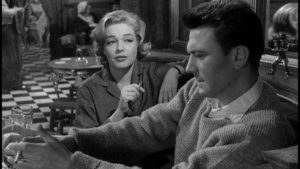
Joe’s incessant desire for self-advancement knows no bounds and he joins an amateur dramatic group in order to ingratiate himself with some of those in the know. The titular Room at the Top is not just a metaphor here, but also refers to an actual place in Warnley where Joe is told the more affluent inhabitants of the town live. Alice Aisgill (Simone Signoret) – a fellow member of Joe’s dramatic group – resides in this part of town, but places little value on her current situation and the trappings which it entails. An unhappily married French woman, Alice operates on a sensual and sentimental level in contrast to Joe whose chief drive is a material one. But something brings these two together. A perfectly realised shot of Alice gazing at the reflection of Joe backstage tells us much about her innate attraction. When Joe’s pursuit of Susan Brown hits several stumbling blocks (including her parents objections and the derisive comments of Jack Wales), the younger man eventually turns to Alice for advice and some solace. The comforting words which are offered soon become more than just that and Joe and Alice embark upon an intimate but illicit relationship.
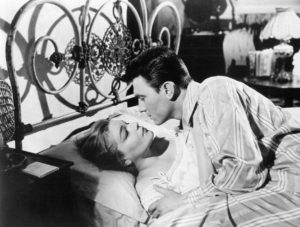
The sexual content of Room at the Top is absolutely nothing by today’s standards, but one can certainly imagine how it must have caused quite a stir at the very end of the 1950s. The theatrical posters of the day promised ‘A Savage Story of Lust and Ambition’, but what really emerges now (on repeat viewing) is a potent and tender love story between two unlikely people who have found each other in spite of their different backgrounds. The forbidden nature of such a liaison would have represented the most scandalous aspect of Room at the Top in a contextual sense. Alice’s best friend Elspeth (Hermione Baddeley) allows them to use her flat for their mid-afternoon encounters. On one such occasion – when she returns early – she reminds Joe of what a profoundly decent person Alice is and warns him against ever hurting her. But a mild sense of foreboding informs the film because the viewer is quite certain that Joe will do just precisely this. He is, after all, a man who has come to this town with an almost grim sense of intent. The fact that Susan’s parents send her to Europe on vacation in order to avoid his burgeoning charms merely serves to confirm a victory of sorts for himself. The fact that they care in such a fashion means that she also cares he tells himself. When he and Alice temporarily break up and Susan returns, Joe seizes his opportunity to woo the young woman and, finally, make love to her.
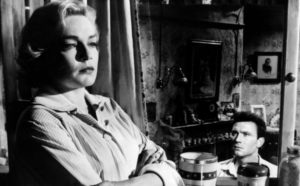
The portrayal of industrial and post-war England is one of the most striking visual aspects of Room at the Top and the film is served well by the great cinematographer Freddie Francis. A brief return visit on Joe’s part to his home town of Dufton is illustrative of this. Standing in the ruins of his own house, where both his parents died during an air raid, Joe is photographed in a striking pose which suggests his conscious break with the past and latent expectations for the time ahead. The house in which he lived will never be rebuilt just in the same way that his own formative years can never be revisited. When he visits his aunt and uncle in the town, he tells them of the pretty girl named Susan who has much ado about her with respect to her class and family. ‘Stick to your own kind’ his aunt gently advises, but, of course, Joe has no intention of doing so. In many ways his character is emblematic of a general desire to dispense with what has gone before. The war is over and the task of forging a future must certainly take hold. Joe’s inexorable desire has been to climb socially and better himself in the process as he imagines. The sense of stagnation which appears prominent in Dufton no longer holds an interest for him. The nation as a whole must progress by necessity and Joe – as we have previously seen – is all too eager to embrace such a world view.
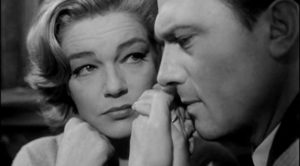
The cost of such an attitude comes at too high a price and this is the element of the story which gives Room at the Top its gloriously tragic quality. Resuming his love affair with Alice (following the evidently insipid sexual encounter with Susan), Joe determines that the two belong together and she should divorce her husband George. Aisgill (Allan Cuthbertson) is not receptive to such an idea and threatens to ruin them both by means of public scandal. In the meantime, the drama of the piece intensifies as Susan’s father summons Joe to join him for lunch. Revealing to the visibly-shocked Joe that Susan is now in the family way, Brown insists on a quick marriage and also demands that Lampton finish with Alice – their relationship is now the town’s worst kept secret. Joe complies with these requests, but the ramifications of doing so are stark and – finally – grievous. An embittered and intoxicated Alice dies of injuries she sustains in an automobile accident. On his wedding day, the conscience-stricken Joe begins to weep uncontrollably as he and Susan depart the church. Her remark to him on this serves to illustrate her own naivety on the subject, but also offers an unwitting piece of commentary on Joe’s state of mind as it has now evolved – ‘Darling, you’re crying! I believe you really are sentimental after all.’
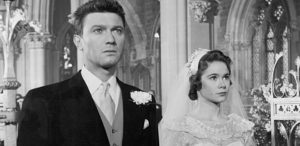
Room at the Top has aged well, as I suggested before, and much of this is down to the direction of Clayton, the superb adaptation of Braine’s novel by Neil Paterson and the second-to-none central performances by Harvey and Signoret. Both actors were nominated for Academy Awards in their respective fields; Signoret won the Oscar for Best Actress in a leading role at the 32nd ceremony beating out Audrey Hepburn, Katharine Hepburn, Doris Day and Elizabeth Taylor. Paterson also won an Academy Award for Best Adapted Screenplay and the film was also nominated in the categories of Best Actor (Harvey), Best Supporting Actress (Baddeley), Best Picture and Best Director. In spite of its specific epoch, the film retains its significance and dramatic power to this very day because essentially it is a parable with a very coherent message at its core. The final scene demonstrates how Joe Lampton has come to realise the consequences of his ambitions and actions; lost in his tears and thoughts, he is also lost in a moral sense we feel. A 1962 sequel to Braine’s novel – titled Life at the Top – was subsequently followed by a 1965 cinematic sequel of the same name which also starred Harvey. Its similar themes and narrative thread confirmed as much. The Room at the Top may well be alluring, but its veneer of glamour is short on substance when compared to the true passions of the heart. Bereft of the love of his life, Joe is patently aware of how hollow his personal victory is. The tears are very much real. The journey he has taken to arrive at the top has exacted a toll on himself and come at an even more dreadful cost to his beloved Alice. See this 1959 classic and you will fully understand what I mean.